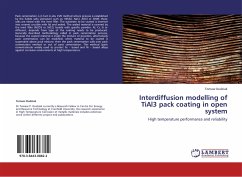Pack cementation is in fact in-situ CVD method where process is established by the halide salts (activator) such as: NH4Cl, NaCl, AlCl3 or NH4F, these salts are mixed with the inert filler. The substrate to be coated is inserted into ceramic crucible with lid and sealed. The sealed material is covered by the inert filler (Al2O3 or SiO2), beside with specific powder: Al, Cr, Si or different, depends from type of the coating needs to be produced. Generally described methodology called in pack cementation process, because the coated material is inside the mixture of powders, alternatively pack cementation can be modified; when material to be coated is suspended above pack mixture, then the pack cementation calls over pack cementation method or out of pack cementation. This method (pack cementation)is widely used to protect Fe based and Ni based alloys against corrosive environments at high temperatures.







